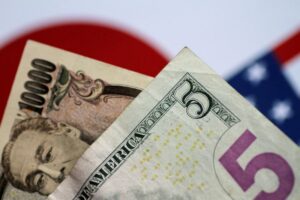Understanding Japan’s Monetary Policy: Insights from Former BOJ Governor Haruhiko Kuroda
In recent discussions surrounding global currency dynamics, Japan’s economic policies have come under scrutiny, particularly by U.S. leaders who express concerns over currency manipulation. Former Bank of Japan (BOJ) Governor Haruhiko Kuroda has stepped forward to clarify Japan’s stance, especially in light of comments from former President Donald Trump regarding the Japanese yen.
Addressing Misunderstandings
Kuroda emphasized the importance of addressing any misconceptions that the BOJ’s monetary policy was designed to weaken the yen intentionally. In his televised remarks, Kuroda refuted Trump’s allegation that Japan’s economic strategies aimed at devaluing its currency, which could unfairly disadvantage other economic players, particularly the United States. He stated, "The BOJ is not intentionally guiding the yen lower with monetary policy. If there’s any misunderstanding on that point, it needs to be addressed."
This response comes at a time when currency manipulation accusations are becoming more frequent in international finance, necessitating clear communication from central banks to maintain trust on the global stage.
Japan’s Monetary Policy Development
Under Kuroda’s leadership from 2013 to 2023, the BOJ implemented radical monetary easing strategies intended to combat decades of deflation and stagnant growth. This included a substantial asset-buying program, negative interest rates, and a bond yield control framework. However, the consequences of a weak yen raised eyebrows, leading to allegations that Japan was deliberately depreciating its currency to boost export competitiveness.
In a significant policy shift, current BOJ Governor Kazuo Ueda has begun to normalize rates. The latest adjustments included a short-term rate hike to 0.5% in January, signaling a move towards sustainable economic growth and inflation targets. Kuroda supports this transition, stating, "The BOJ is already normalizing monetary policy and will steadily proceed on this front, such as by gradually hiking rates toward levels deemed neutral to the economy."
The Impact of External Factors
Kuroda acknowledged that Japan’s ability to support the yen is limited, especially with external pressures such as the anticipated rise in U.S. interest rates due to inflation from recent tariffs. This delicate balancing act reveals the interconnectedness of global economies; a strong dollar can significantly impact the yen’s value, complicating Japan’s monetary policy options.
Moreover, after a period of aggressive stimulus measures—where the yen fell to a 38-year low near 162 yen to the dollar—Kuroda noted the need for Japan to manage its currency carefully. "In fact, the Japanese government has been making huge efforts to prevent the yen from weakening," he remarked, underscoring the government’s active role in stabilizing its currency.
The Path Forward
Kuroda’s recent commentary comes with an understanding that while the BOJ has taken significant steps to revive Japan’s economy, a cautious approach is required going forward. "Raising rates quickly above neutral or keeping rates low for too long are both inappropriate," he remarked, indicating a careful strategy is essential to curbing inflation while fostering economic growth.
In conclusion, as the BOJ continues on its path to normalization, it remains crucial for policymakers to maintain clear and transparent communication. This will help mitigate any potential misunderstandings in the international markets and uphold Japan’s stature as a significant player in the global economy.
By staying informed on these evolving dynamics, investors and financial enthusiasts can better navigate the complexities of international finance. For more unique insights and analysis on global finance, currency markets, and investment strategies, keep following Extreme Investor Network.

